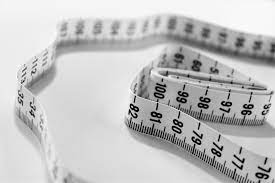Educating our clients on how to improve health outcomes certainly falls under the purview of health and fitness coaching. With that, explaining the relevance of body composition, the flaws of the body mass index (BMI), and how stored adipose tissue correlates with health risks, specifically with regard to waist circumference, is an important aspect of coaching overweight clients. Let’s discuss the science and realities of specific measures of gauging overweight as it relates to morbidity and mortality.
A Weighty Matter

Trainers provide the best value when they assess, design thoughtful fitness programs, demonstrate, educate, and motivate their “apparently healthy” clients.
Improved health span, physical performance, or bodily aesthetics are all targets for client motivation. Types of stored body fat, where that fat is located, and how much is present in our adipose tissues are also often training stimuli for many of our varied clients.
There are several ways to categorize and view adipose tissue or fat: essential or non-essential, subcutaneous or visceral, brown or white, “healthy” or “unhealthy” can be knowledge and relational challenges for client and trainer alike1.
Without essential body fat, we die. Yet, excess unhealthy fat, especially when accumulated in specific body regions increases risks of serious diseases or life-affecting conditions.
Storage of excess, unhealthy “white” fat is called obesity. Obesity, or “having eaten until fat” was a societal sign of well-being in older, leaner times. We know now that fat storage is more complex than just overeating with regard to one’s individual constitution.
Genetics, pre-existing medical conditions, physical inactivity, and challenges for estimating “adiposity” shape these individual client-complexities for stored body fat.2
Etiology of Obesity
The root cause of a disease or condition is called etiology.
Excess energy intake, sedentary lifestyle, stressors like smoking, and genetics can, individually or collectively, determine an individual’s etiology of obesity. Many doctors and health professionals use a population-based “surrogate” number to singly assess a patient’s body mass, usually correlated with obesity, and to implicate future health risks.
That proxy estimate or “mass” index was developed by Dr. Alfonso Quetelet in the 1830s. His Quetelet Index, for “the average man” was rephrased as Body Mass Index (BMI) by scientist Ancel Keys in 1972.
One modern medical researcher called this BMI screening formula of Dr. Quetelet and Ancel Keys “bizarre” pointing out that those who are too short, too tall, or even too muscular would not be adequately assessed.
BMI = Weight (kg) / Height∧2 (m)
We now realize that older folks, women, non-Europeans, and muscular athletes were not researched.
Facts:
- Today’s “average” clients have gotten taller, heavier, and live far longer than Dr. Quetelet’s clients in the 1830s – despite higher BMIs.
- Jerry Rice, an NFL Hall of Famer, was called “obese” after his Body Mass Index (BMI) was screened. This tall, very muscular, and very lean black athlete had measured body fat in single digits. Granted, he is a statistical BMI outlier.
- A notable percentage of muscular clients (and trainers) have BMIs that can misinform for true overweight or obese body composition and their potential health risk.
Is there a better measure?
Health professionals recognize that a human’s tendency to store dangerous white and visceral fat around her or his middle (waist) may better screen for mortality risk than is an “average” surrogate calculation (BMI). Yes, there are some health span exceptions, as both waist circumference and BMI are good screeners for potential Adult-Oneset (Type 2) Diabetes.
The human mid-section and its circumference is a new average measure for stored body fat and obesity. Waist circumference (measured at the iliac crest) is cited by the American Heart Association as a preferred method for body fat screening for muscular athletes.
Big Waist, Big Deal
A thick waist equals a big health risk.
- Females with waists of 35 inches or more have a statistically high risk for heart problems. Normal-weight women with a waist of 35 inches or higher had three times the risk of death from heart disease (citation https://www.hsph.harvard.edu/obesity-prevention-source/obesity-definition/abdominal-obesity/)
- Males with waist measurements of 40 inches or more are truly “high risk” for cardiovascular disease (US’ number one cause of mortality), and possibly some diet-influenced cancers.
There are two extended variant measures of a human’s waist circumference:
- Waist over/to Hip Ratio (WHR)
- Waist To Height Ratio (WTHR).
Modern research on these two variants suggests potential screening value for future health risks, and obviously, body aesthetics.
Eyeball it or Measure it?
A subjective, simple way for a client to assess obesity and potential health risk is to “eye” a full-length mirror (with mid-riff exposed).
- If the client can see abdominal muscle definition, then she or he likely has “healthy” body fat percentage, and hence, lower risk of disease.
- If the client cannot see ” dad bod love handles” or “muffin top hips”, then the chances of being overweight or obese are unlikely.
- Using a tape measure is obviously more objective using the above-mentioned parameters for men and women; a waist circumference check can provide good news or serve as a valid warning sign for decreased health span.

If a client’s current waist measurement is “large” and/or is bigger than hip circumference – there is a PAR-Q danger zone for cardiovascular disease and lifespan risk.3
With few exceptions, waist circumference is a better indicator of CVR health risk and bodily aesthetics than the centuries-old BMI screen. High weight or body mass doesn’t always equate to high health risk or to what a client aesthetically sees in the mirror.
Body fat and body composition are keen areas for trainer-client relations and a tremendous opportunity to share knowledge.
References
- https://www.thesecretlifeoffat.com/
- Journal of the International Society of Sports Nutrition. 2(2): 4-31, 2005.
- Bredin, Shannon S D et al. “PAR-Q+ and ePARmed-X+: new risk stratification and physical activity clearance strategy for physicians and patients alike.” Canadian family physician Medecin de famille canadien vol. 59,3 (2013): 273-7.
Dave Frost has served the fitness community as a NFPT-certified CPT since 2013, and a Master Fitness Trainer since 2019.
As a Medicare-aged baby boomer, he specializes in training those clients who intend to stay “well past forty”.
He is a former world champion in Masters Rowing and National Indoor Rowing champion for his age group. He is also a group fitness instructor for The Row House. His website is https://wellpastforty.com. Dave recently published his work: KABOOMER: Thriving and Striving into your Nineties to promote stamininety for those intending to add years to their lives and life to their years.


